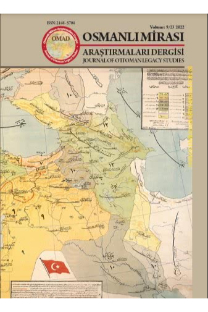Mimarlıkta Teori ve İdeoloji Arasındaki Fark
THE DIFFERENCE BETWEEN THEORY AND IDEOLOGY IN ARCHITECTURE
___
- Bakos, Jan, Monuments and Ideologies, Centropa 2, New York 2001, 101-107.
- Berndt, Heide, Lorewezer, Alfred, Horn, Klaus (eds.), Architektur als Ideologie, Edition suhrkamp, Frankfurth am Main 1968.
- Kadijević, Aleksandar, Arhitektura i duh vremena, Građevinska knjiga, Beograd 2010.
- Kadijević, Aleksandar, Uloga ideologije u novijoj arhitekturi i njena shvatanja u istoriografiji, Nasleđe VIII, Beograd 2007, 225-237.
- Knoll, Petar, Ideologija moderne arhitekture, Arhitektura 9, Ljubljana 1933, 124-130.
- Kruft, Hanno-Walter, History of Architectural Theory, Princeton Architectural Press, Princeton 1997.
- Mannheim, Karl, Ideologie und Utopie,Cohen, Bonn 1929.
- Perović, Miloš, Antologija teorija arhitekture XX veka, Građevinska knjiga, Beograd 2008.
- ISSN: 2148-5704
- Yayın Aralığı: 3
- Başlangıç: 2014
- Yayıncı: Abidin Temizer
Mimarlıkta Teori ve İdeoloji Arasındaki Fark
Hicaz Vilayetinde Islahat ve Bayındırlık “Sultan II. Abdülhamid Dönemi”
THE DIFFERENCE BETWEEN THEORY AND IDEOLOGY IN ARCHITECTURE
Şemsettin Sami’nin Kamusu’l-a’lam’ında Arnavutluk Şehirleri
Osmanlı Eğitim Sisteminde Matematik Eğitimi: Cāmìʿü’l- Ḥisāb Örneği
IMPROVEMENTS AND PUBLIC WORKS IN THE HIJAZ PROVINCE “THE RULE OF SULTAN ABDULHAMID II”
LEADERSHIP TRAITS OF SULEIMAN THE MAGNIFICIANT, IN TERMS OF “GREAT MAN” THEORY
MATHEMATICAL EDUCATION IN THE OTTOMAN EDUCATIONAL SYSTEM: THE CASE OF CĀMÌʿÜ’L-ḤİSĀB
